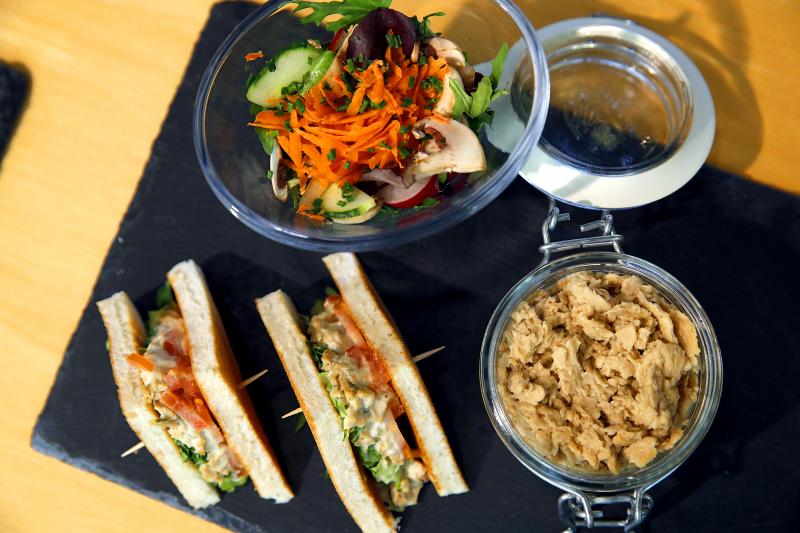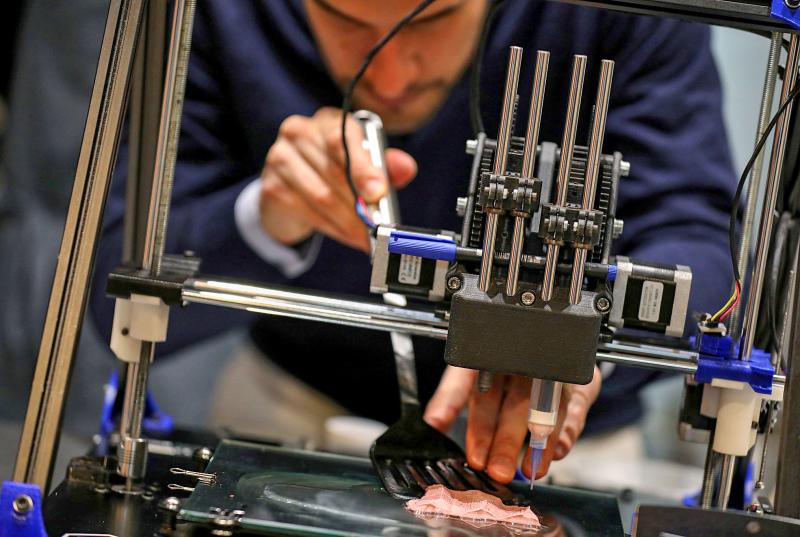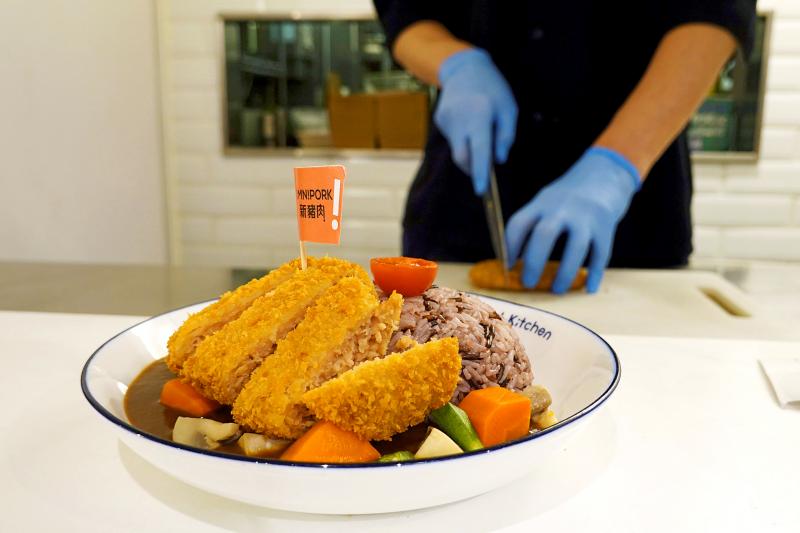Model consultants, 
marketplace analysts and cooks 
make clear how a merchandise 
will get to be awesome
-
By Tony Naylor / The Guardian
Every January, the British foodstuff media makes an attempt to predict which elements and dishes will define the subsequent 12 months. A new year signifies new foodstuff and magazine suggestion-lists of awesome substances. It is classic. This inexact science, a mix of investigate, instinct, wishful wondering and cribbed retailer facts might, depending on your stage of look at, appear to be possibly harmless or absurd. But it has been valuable for individuals offering craft gin, pulled pork, acai berries, gochujang, pastry stouts or any of 101 products that in the previous decade have identified on their own hailed as The Future Significant Point.
Such renewal is human character, suggests Daniel Woolfson, food items and drink editor at trade magazine The Grocer. 
“People are faddy. When Instagrammable stuff receives previous, they instinctively look for the subsequent issue.” But how? Exactly where? Can the community make traits, in its likes and retweets? Or are we often manipulated by “big foods?”

Photo: Bloomberg
DISRUPTION
“The field is obsessed with disruption,” claims Woolfson. That is, developing a new sub-group in a food stuff or drink group or transforming how an product is perceived and bought. Fever-Tree is the typical instance. It pioneered an unexpected market place for “posh tonic” and even now when, like kombucha, cupcakes, Brewdog or smashed-patty burgers, it is extensive earlier peak great, it retains an aura of excellent and sophistication that bolsters profits. In 2014, 9 a long time after its launch, the firm was floated on the inventory market place, valued at £154 million (US$208.5 million). It is now worth significantly much more.
“Difference sells,” suggests Perry Haydn Taylor, founder of the branding consultancy, Significant Fish. “Like canines, foodies wag their tails at the slightest sniff of new and fascinating. Then bark at every other on social media. Meals is fashion. If you’re into that stuff, it matters.”

Photo: Reuters
“Brands receiving that hip cult pursuing are the types that allow for individuals to be invested advocates in what they are about,” suggests Fiona Beauchamp of internet marketing company Bray Leino. Instagram appears to be the excellent discussion board for such natural and organic conversation. According to Facebook IQ, foods and drink is Uk Instagram’s most popular subject: 39 p.c of buyers contemplate on their own “food aficionados.”
The actuality, states Miguel Barclay, regarded for his Instagrammable “one pound meals,” is a manic scramble to get eyeballs-on-merchandise making use of freebies and paid posts. “Vegan providers are on a whole new stage. They locate any person who ever utilised the hashtag vegan, develop up a network of 200 influencers and bombard them with cost-free presents. I get the job done with very number of manufacturers. But most people [on Instagram] promote stuff all the time and don’t treatment what it is.”
With his 300,000 followers and bestselling cookbooks, Barclay is amongst an elite of Instagram faces who can pull a “five-determine sum, easily” as brand name ambassadors. These types of gigs, fronting and developing recipe material for effectively-recognized organizations “are much more subtle, practical and traditional.”

Picture: Reuters
Barclay would say that. He could be ideal, way too. As proprietor of Sous Chef, an on the web retailer of professional elements, Nicola Lando is completely scanning the horizon for the subsequent kefir or kimchi, all over the place from trade fairs to the US media. She refuses to identify a mounted hierarchy of influence but states the endorsement of authoritative chefs and cookery writers however matters. The resulting on the web chatter confirms the agenda, instead than setting it. 
“What drives Uk foodstuff trends is people seeing appealing ingredients on restaurant menus, having photographs and sharing dishes,” she claims. 
“Products are noticed as quality if chefs use them,” agrees Stefan Chomka, the editor of Restaurant Journal. “And, not too long ago, a lot of tendencies — barbecue, kimchi, bao buns — have arrive from dining places. Supermarkets look at what is happening there.”
Details AND PR
When selecting to list fashionable substances, the supermarkets’ examination goes much deeper. Waitrose’s government chef Martyn Lee, who sales opportunities the store’s solution development, tracked guanciale’s developing reputation as a result of modern day Italian cookbooks and dining places these as Polpo and Padella, but Waitrose only opted to inventory it in Oct soon after “data-driven” reviews from its social media and world wide web teams verified healed pig’s cheek was in demand from customers nationally. “You have to have many instances of a thing coming by to be part of the dots,” states Lee. “We place traits by them showing up in unique spaces.”
How that buzz is produced differs enormously depending on goal, price range and luck. Are you taking pictures for grocery store ubiquity or locking in a faithful cult following? Supplied how people crave validation, you will commonly need to have bartenders, baristas, bloggers, food items journalists and other reliable figures (even vital, high-quality Instagram influencers) on your facet, conversing you up.
Ever puzzled how avocados turned ubiquitous? Two decades of preparatory perform by the London PR company Richmond & Towers assisted. In 1995 it started to act for the South African Avocado Growers Association, taking journalists to South Africa, using cooks, wellbeing and life-style ambassadors to strengthen the fruit’s profile, and developing in-keep revenue product and recipe booklets. Again then the activity was easy: teach any individual unfamiliar with the fruit how to eat it.
All around that time British isles avocado income have been really worth £13 million each year. By 2016 that determine had shot up to £150 million. There was an component of fantastic fortune here. Style is normally contingent — in the avocado’s situation on the increase of the “wellness” marketplace, so-named superfoods and social media’s foregrounding of all issues photogenic. Even so, it is hard to begrudge Richmond & Towers claiming this 18-year marketing campaign (which finished in 2013 and expense about £2.5 million) as “the most thriving clean make marketing campaign in United kingdom background.”
Will COVID-19 nip such frivolity in the bud? Sluggish the trends cycle? Not very likely. Merchants report a considerable change to comfort food items. The economic climate is shot. The fashions that this new natural environment could possibly spawn may possibly feel much less glib. But individuals tendencies (a concentration on craft and utility in food stuff, cementing the property-baking craze, maybe a put up-Brexit operate on British heritage elements) may possibly nonetheless be the ones that foodies lap up.
There is a escalating moral objection to the damage this greedy churn makes. World trade in hyped elements can cause ecological and social fallout, such as price spikes in nations wherever the products originate from. In 2017, soon after a bad harvest of avocados, experiences blamed world demand for building this when staple food items too high priced for many standard Mexicans.
The way this sort of elements are routinely bought in Britain, as “new” and “exotic,” ignoring their status in some communities or extensive culinary histories, is also more and more remaining regarded. For instance, provided the media coverage you’d be forgiven for thinking jackfruit was invented as a meat substitute in Dalston in 2017 relatively than something made use of in savory south and south-east Asian dishes for aeons.
“When a foods will get common, I want to see the individuals who kept those recipes and food items cultures alive for generations, not anyone who ‘discovered’ it on holiday break, nor large firms who pillage lands, providing very little back fiscally, culturally or ecologically,” claims Riaz Phillips, writer of Belly Entire: Caribbean Meals in the United kingdom.
In the same way, Lap-Fai Lee, a skilled cook and tutor in Birmingham, finds chefs putting their “twist” on east and south-east Asian food items “laughable, juvenile, mildly racist. No western chef would put basil in carbonara, but they happily ‘reinterpret’ XO sauce. Following, it’ll be kosho, nam jim, sambal.”
Feedback will be moderated. Hold comments relevant to the posting. Remarks containing abusive and obscene language, personalized assaults of any form or marketing will be eliminated and the consumer banned. Last selection will be at the discretion of the Taipei Times.
